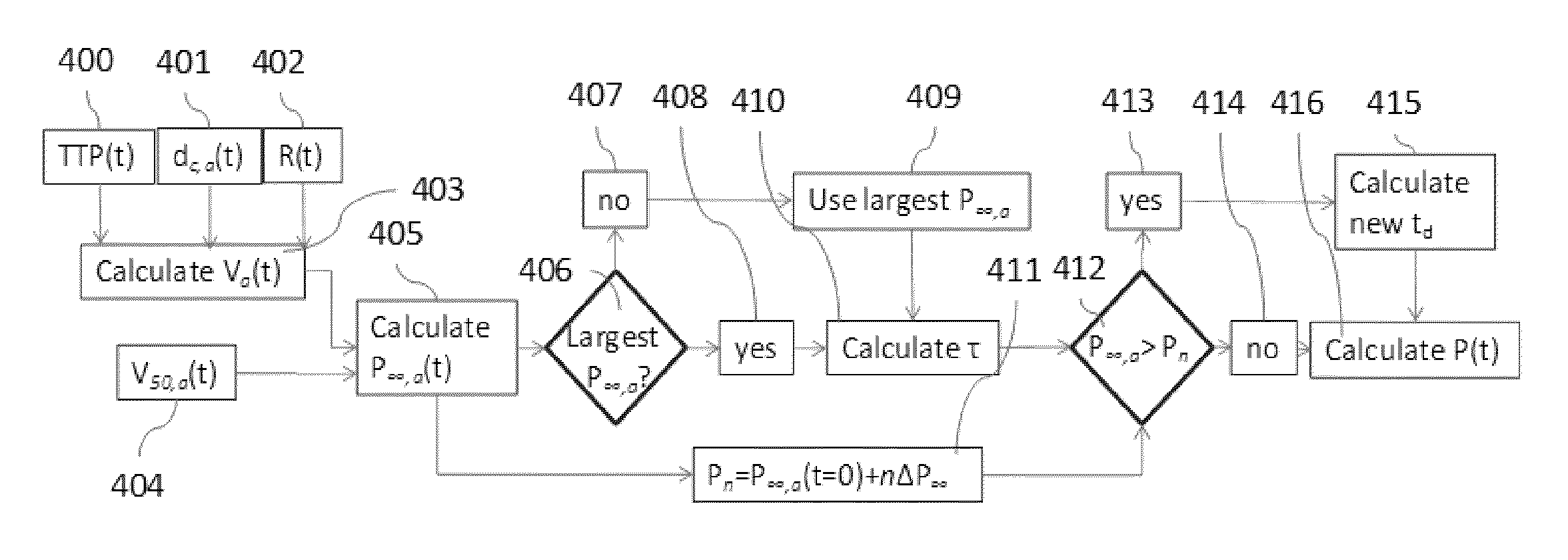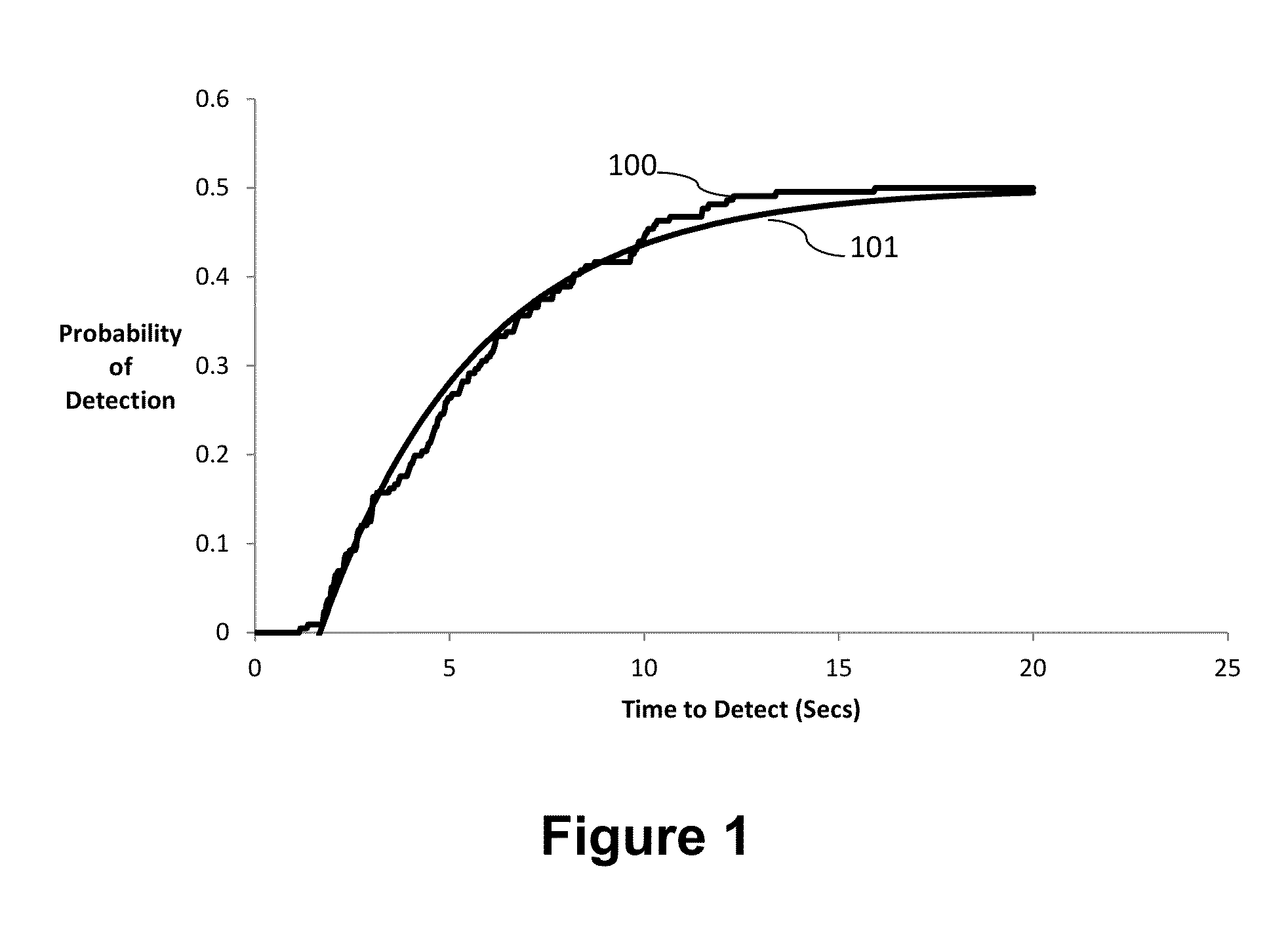Method for modeling human visual discrimination task performance of dynamic scenes
- Summary
- Abstract
- Description
- Claims
- Application Information
AI Technical Summary
Benefits of technology
Problems solved by technology
Method used
Image
Examples
Embodiment Construction
[0027]By way of background, in prior art a method for modeling human visual discrimination task performance begins with the step of measuring the number of resolvable cycles V, for a particular imaging system against a particular target or particular set of targets at a particular range. The resolvable cycles are given by:
[0028]V=(TTP)(dcR)
where dc is the characteristic size of said target or the average for the set of targets (in meters) and is given by the square root of the cross-sectional area of the target, R is the distance from the imaging system to the target or set of targets (in kilometers), and TTP is the number of resolvable cycles per milliradian that an observer with a particular imaging system can discriminate given a target's inherent contrast and atmospheric attenuation between the target and imaging system. The Target Transfer Probability Function (TTPF) given by:
[0029]P∞=(VV50)1.51+(VV50)1.5
has been calibrated by measuring the number of resolvable cycles V requir...
PUM
 Login to View More
Login to View More Abstract
Description
Claims
Application Information
 Login to View More
Login to View More - R&D
- Intellectual Property
- Life Sciences
- Materials
- Tech Scout
- Unparalleled Data Quality
- Higher Quality Content
- 60% Fewer Hallucinations
Browse by: Latest US Patents, China's latest patents, Technical Efficacy Thesaurus, Application Domain, Technology Topic, Popular Technical Reports.
© 2025 PatSnap. All rights reserved.Legal|Privacy policy|Modern Slavery Act Transparency Statement|Sitemap|About US| Contact US: help@patsnap.com



